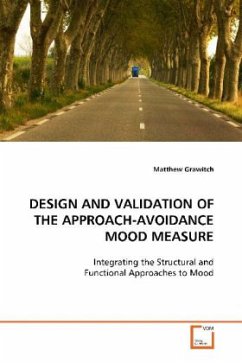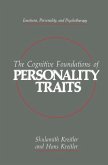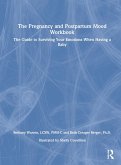Most mood research has emphasized mood from a
structural paradigm. Structural mood paradigms focus
on two structural dimensions of mood: activation and
hedonic tone. More recently, some researchers have
proposed an alternative way to examine mood. The
argument is that the functions that mood states
serve are more useful in understanding the mood-
environment relationship than are the structural
components of those moods. Two functional systems,
an approach system and an avoidance system, provide
the link between mood states and the environment.
The approach system informs the individual about
progress made toward desired positive outcomes
(i.e., outcomes to be achieved). The avoidance
system informs the individual about progress made
away from undesired outcomes (i.e., outcomes to be
avoided). Four studies were designed to develop and
validate a measure of mood consistent with this
functional theory. The Approach-Avoidance Mood
Measure (AAMM) was developed using the lexical
approach to evaluate functional mood states.
structural paradigm. Structural mood paradigms focus
on two structural dimensions of mood: activation and
hedonic tone. More recently, some researchers have
proposed an alternative way to examine mood. The
argument is that the functions that mood states
serve are more useful in understanding the mood-
environment relationship than are the structural
components of those moods. Two functional systems,
an approach system and an avoidance system, provide
the link between mood states and the environment.
The approach system informs the individual about
progress made toward desired positive outcomes
(i.e., outcomes to be achieved). The avoidance
system informs the individual about progress made
away from undesired outcomes (i.e., outcomes to be
avoided). Four studies were designed to develop and
validate a measure of mood consistent with this
functional theory. The Approach-Avoidance Mood
Measure (AAMM) was developed using the lexical
approach to evaluate functional mood states.








